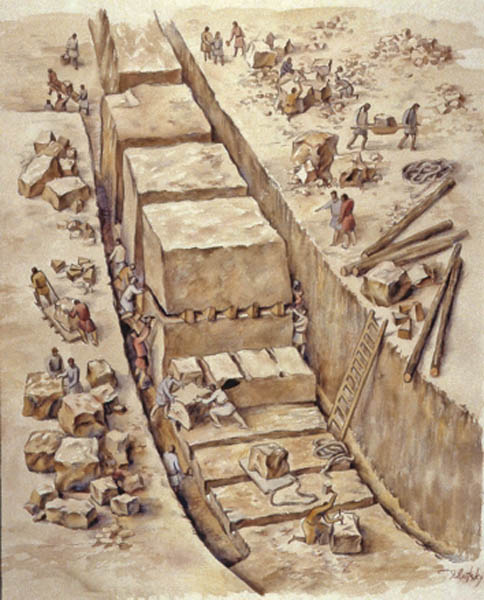Image Details

Reconstruction by Tanya Slutsky
QUARRYING STONE OR ROBBING HISTORY? The stones used to construct Crusader Montjoie were quarried from the hill’s soft yellowish limestone. As shown in the reconstruction, long rows of blocks were chiseled away from the surrounding bedrock and then separated into smaller pieces using water-soaked wooden wedges inserted into narrow channels carved between the blocks. As they dried, the wedges would expand, causing individual blocks to break free. Along the western wing of the Crusader fortress (bottom of photo at left), one can still spot the clear traces of quarrying activity.
In order to reach bedrock, however, the Crusaders first had to clear most of the hilltop of its substantial overburden of soil and debris. As a result, the quarrying process destroyed layer upon layer of archaeological deposits dating as far back as the Iron Age II, if not earlier. It was only along the southeastern fringe of the hilltop, in an area unspoiled by Crusader quarrying and building activity, that Magen uncovered the stratified remains of a Hellenistic residential quarter.
